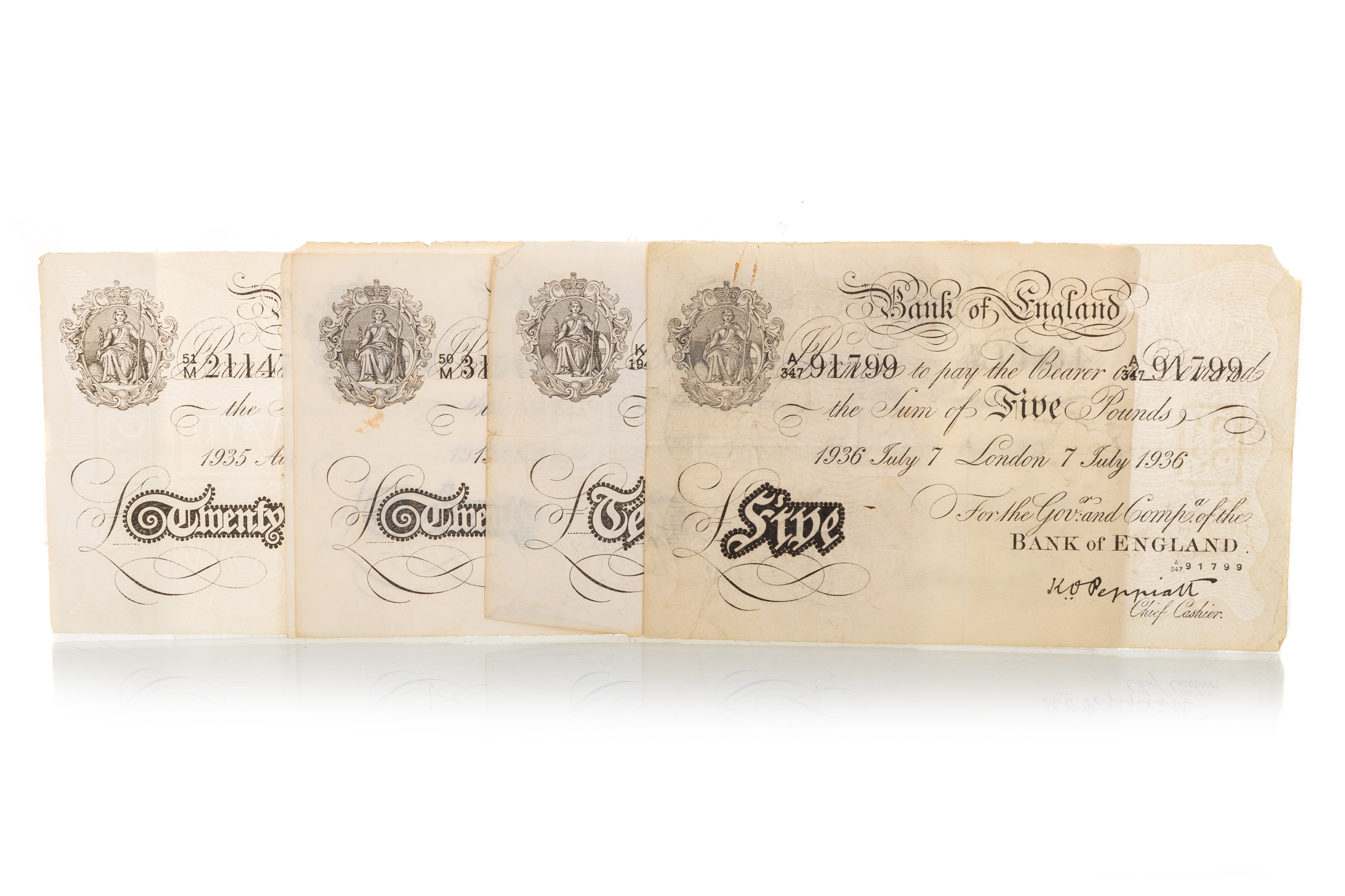Operation Bernhard
The biggest counterfeiting effort in history
The year was 1939 and Britain was had just declared war with Germany when an elaborate plan was derived by the intelligence agency of the SS to flood Britain with counterfeit banknotes to collapse the British economy.
The banknotes, amounting to £30 billion by their estimations, would then be dropped over Britain causing a total financial collapse and loss of its world currency. There were objections to the plan with fears that it would breach international law however, it all came down to one person, Adolf Hitler, who gave the final seal of approval for the operation to commence.
Originally, the scheme ran from 1940 under the name Operation Andreas but by this time, Britain had caught wind of the plot and issued a warning to people to be vigilant when exchanging currency. The Bank of England, however, were confident in their security measures that any counterfeit notes would be easily identifiable. This operation came to an end two years later after Alfred Naujocks, head of the operation, fell out of favour with his superior.
Shortly after its cease, the scheme was revived under SS Major Friederich Bernhard Krueger and conveniently renamed Operation Bernhard. By this time, they not only wanted to collapse the British economy but the operation took a new route; using forged banknotes to finance German intelligence operations and ultimately, pay for international agents to gather crucial British intelligence information.
After its revival, the specialist unit producing these notes could no longer keep up with their own demands and this is where things took a sinister turn. Krueger identified prisoners of war held within concentration camps who had experience within the fields of engraving, printing, banking and typography. From here, he assembled a team of 142 prisoners, which included convicted forger Salomon Smolianoff, and set up a unit within Sachsenhausen concentration camp near Berlin.
Here, the prisoners meticulously studied genuine banknotes and worked on perfecting the paper, forging signatures, mastering the printing process and crucially, identifying security marks. The Nazi’s were then able to produce very high quality printing plates and banknote paper that would avoid detection due to their meticulous study of genuine banknotes.
Once printed, the banknotes would then be handed to another team of prisoners with dirty hands who would then continuously rub and fold the notes. The result? A wad of banknotes that looked like they had passed through the hands of hard working Britons, indistinguishable to the naked eye.
Famously, this money was laundered to pay Turkish agent Elyesa Bazna for obtaining British intelligence from the British ambassador and most notably, £100,000 of this money was used to obtain information used to free Benito Mussolini during the Gran Sasso raid in 1943.
Despite their huge success, the Germans hadn’t quite managed to master the serial numbering system and were forced to reuse serial numbers. This would be their downfall. They were rumbled in 1943 when an eagle eyed bank teller realised that a note that he was trying cash had in fact already been cashed at a British bank in Morocco so it had to be a fake. Word was spread and the Bank of England withdrew all banknotes in circulation with a face value higher than £5 and issued a blue emergency banknote which featured a metallic security thread through it.
By this time, German defeat was inevitable and the banknote forging prisoners were transported, along with the banknotes, to Mauthausen-Gusen camp in Austria then onto the Redl-Zipf series of tunnels where they continued the operation until liberation in May 1945. Here, they were ordered to burn the banknotes that had been transported with them and for the remainder of new notes produced and the printing plates, they were ordered to sink these in the Toplitz and Grundslee lakes. The hope was that the depth of the lake would prevent recovery of the forged notes and equipment but in 1959, a diver found many wooden boxes containing counterfeit £5 banknotes with printing plates recovered a few weeks later. The ‘value’ of the recovered banknotes cannot be accurately determined but it was believed to amount to around £300 million. Boxes of these forgeries have been recovered from the lake beds up until as recently as the year 2000.
Kruger hid at his home until he surrendered to British authorities in November 1946 and shockingly, as forging an enemy’s currency was not a war crime, he faced no charges for the operation.
Whether you are a banknote enthusiast or a keen historian, lot 124 in the October Coins and Banknotes Auction offers a group of these forged banknotes which will live on to tell the tale of the biggest counterfeiting effort in history.
Entries are currently invited for the next auction taking place on 27 November. For a complimentary, no-obligation valuation, contact a specialist on 0141 810 2880 or amy@mctears.co.uk.
What's it worth?
Find out what your items are worth by completing our short valuation form - it's free!
